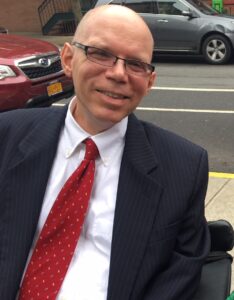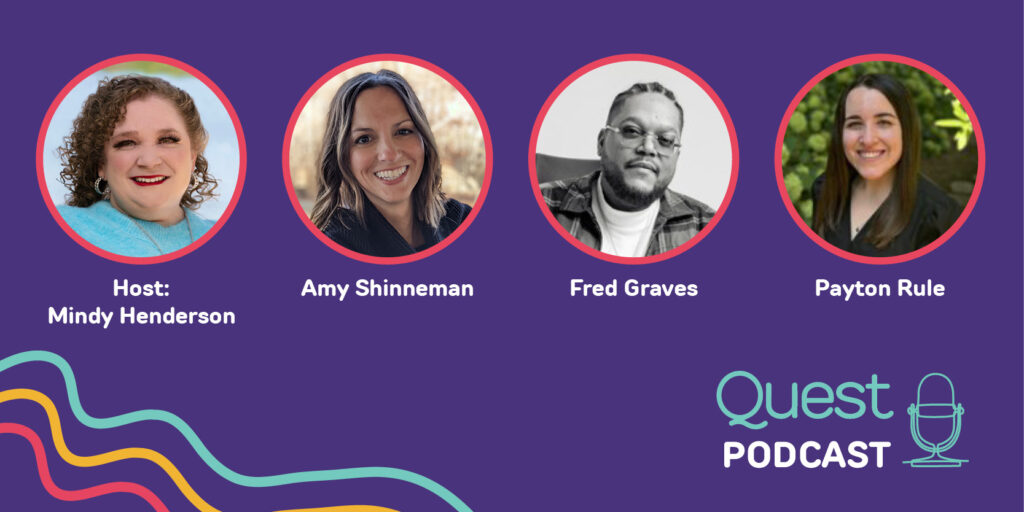
Beyond High School: Top Strategies for Finding a Career Path
By Elizabeth Millard | Tuesday, August 22, 2023
5 Second Summary
Go to college or a trade school? Get a job? Find an internship? These strategies can help teens with disabilities think about their next step and how it can move them toward the future career they want.
Deciding what’s after high school is challenging for everyone, but those with neuromuscular diseases and physical disabilities may feel their choices are narrower. In fact, there are a lot of reasons to think broadly about what you can do with your skills and interests. Pursuing a field of study, considering a trade, or going directly into a career can offer more options than many people think.
“The biggest starting point for kids with muscular dystrophy and their families is to set expectations high, because while there are challenges, it’s an unprecedented time for hope thanks to equal access protection from Title I of the ADA and employer-led diversity and inclusion initiatives,” says Chris Rosa, PhD, President and CEO of the The Viscardi Center, which provides programs and services for children, adolescents, and adults with disabilities.

Dr. Chris Rosa
Dr. Rosa knows firsthand the issues that come with pursuing college and a career — he’s been using a wheelchair since he was diagnosed with limb-girdle muscular dystrophy (LGMD) at 12. Before joining Viscardi, he was Assistant Vice Chancellor for Student Inclusion Initiatives at City University of New York. He believes there’s been no better time than right now for those with disabilities to aim high.
“The contributions of people with disabilities are being recognized more than ever,” he says. “The rise of remote work during the pandemic is another development that showed how people who work from home can be productive and valuable, and that includes those with disabilities. When it comes to pursuing higher education, a trade, or a career, I believe all those factors are converging and we should all feel optimistic about the breadth of opportunities as a result.”
With that in mind, here are some top strategies for thinking about what’s next, and moving in a direction that feels meaningful and built for the future:
1. Focus on skills and interests first
People with disabilities may feel discouraged when considering a career path or a course of study if they begin by thinking of what they can’t do.
“Many times, these individuals and their parents may not notice their major strengths and interests,” says Susann Sears, Director of Beckwith Residential Support Services, and Assistant Director of Disability Resources and Educational Services (DRES) in the College of Applied Health Sciences at the University of Illinois, Urbana-Champaign. “It’s natural to think in terms of limitations, but starting with what’s a passion could lead you in a direction you hadn’t considered.”
For example, if a teen adores equine therapy, there could be a wide range of study and career options within the fields of veterinary science, therapeutic services, and even academic research on the effectiveness of therapies. Similarly, if someone is drawn toward being a firefighter but knows that position is not possible with physical limitations, Susann suggests thinking of the support services fire departments and other first responders use.
“Don’t count out a field of study or career just because of what you can and can’t do physically,” she says. “Start exploring what those options could entail in terms of college and career directions. You might be surprised to find there’s a job you’ve never heard of before, and yet would be the perfect fit.”
2. Start as soon as possible
Although many people tend to begin thinking about higher education, trade school, and careers when they’re teens, Dr. Rosa says it’s better to start cultivating those interests and skills earlier — that means noticing particular strengths even in elementary school.
“At The Viscardi Center, we serve kids from kindergarten through age 21, so I’m talking to first graders about what they imagine they want to do and be,” he says. “When you start early like that, you can create a mindset of exploration. That leads to setting expectations high and raising aspirations.”
Another way to spark this perspective is to visit college and trade school campuses. This can be especially valuable for young people who aren’t sure what kind of future career options they’d like to pursue.
“There’s nothing like experiencing the energy and dynamism of a college campus to elevate the hopes of kids with disabilities,” he says.
3. Consider a mentorship or job shadowing
Teens often use summer employment to help them decide on study and career options. Many people with disabilities have been historically disadvantaged because of significantly less access to these jobs. Dr. Rosa suggests finding different pathways that can build resumes and broaden exposure to a range of professions.
“Efforts like finding a mentor, job shadowing, and internships can all be really important and valuable when it comes to making decisions about a career direction, but also making contacts and understanding your options,” he says. “We have data here about what helped college graduates with disabilities make successful transitions to careers and far and away, the most important factor was internship experiences.”
The MDA Mentorship Program provides a unique opportunity for young people to connect with experienced mentors and explore potential career pathways. This 5-week virtual program connects established professionals in a variety of careers with youth and young adults living with neuromuscular diseases for interactive discussions and activities. It is provided at no cost to teens and young adults ages 14-21.
Experiences such as mentorships and internships also provide an understanding of the culture and expectations of a workplace. They build confidence in skills like creative problem solving, collaboration, effective organization, and displaying an entrepreneurial drive. As those strengths build, young people start to identify the aspects of working they enjoy most, adding to the wealth of information that can set a career direction.
4. Draw on every resource
Take advantage of resources geared toward employment and career preparation for those with disabilities. For example, Susann’s office at the University of Illinois assists with matching students with personal assistants, career counseling, and mentors. (Learn more about how colleges support students with disabilities.)
MDA is a key resource, adds Dr. Rosa. “I’m really proud of MDA’s commitment to career readiness, and I’ve been served by MDA since I was diagnosed in 1976,” he says. “There is a community at MDA — and a network of many other organizations and schools — that are ready to help. The purpose is to lift up those with disabilities and help them pursue their passion, whatever that might be. Tapping into that, along with identifying individual strengths and taking advantage of internship opportunities, can all go a long way toward finding the right career path.”
Next Steps and Useful Resources
- MDA’s Mentorship Program is open to youth and young adults with neuromuscular disease ages 14-21.
- Watch MDA’s webinar Preparing for the future: Finding the best college and career for you
- Get valuable skills and resources with MDA’s Access Workshops on Higher Education and Access to Employment.
- Contact the MDA Resource Center at 833-ASK-MDA1 or ResourceCenter@mdausa.org.
- Stay up-to-date on Quest content! Subscribe to Quest Magazine and Newsletter.
TAGS: Career Quest, College, Education, Employment, Featured Content, Resources, Transitions, Young Adults
TYPE: Featured Article
Disclaimer: No content on this site should ever be used as a substitute for direct medical advice from your doctor or other qualified clinician.




